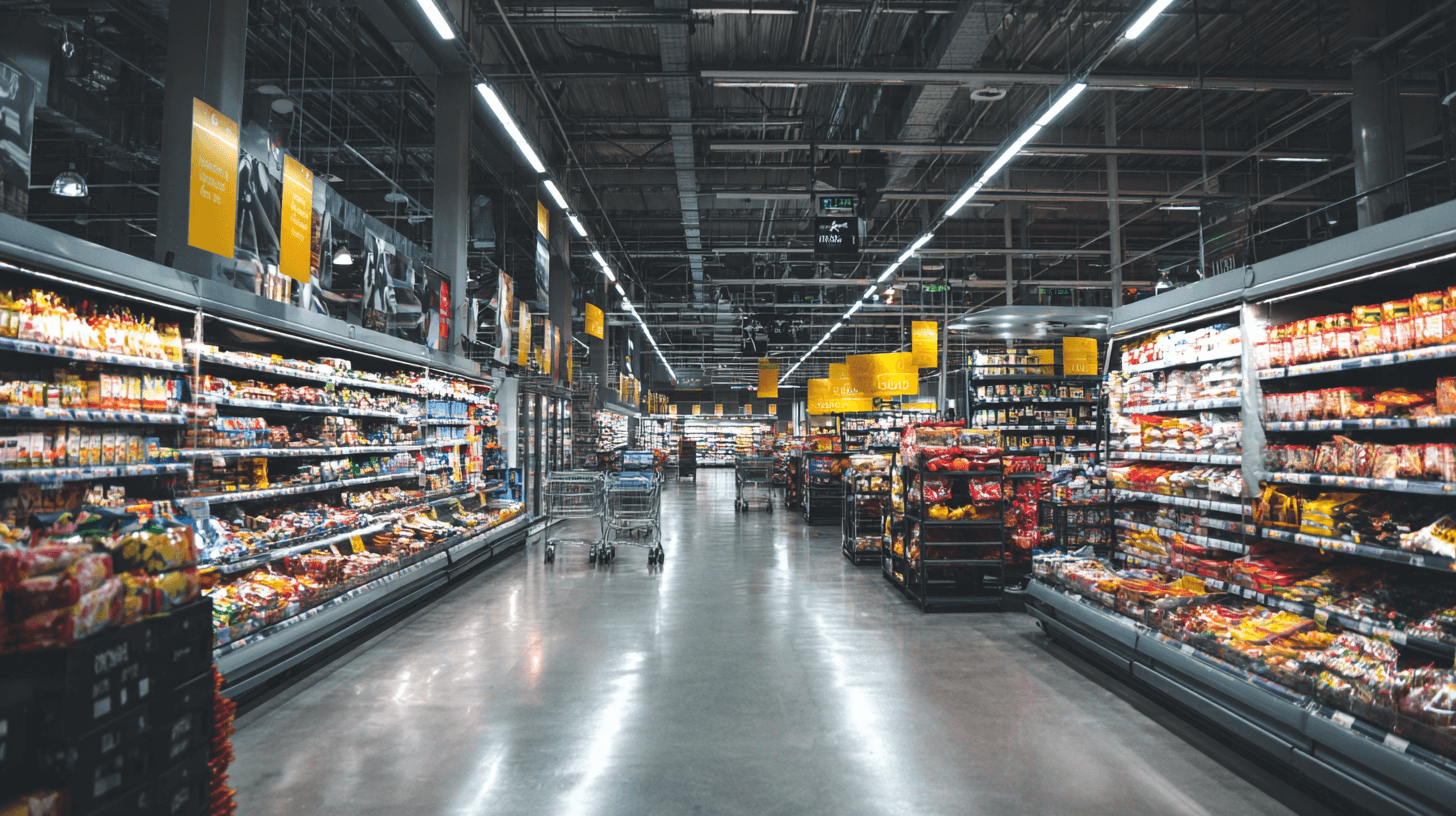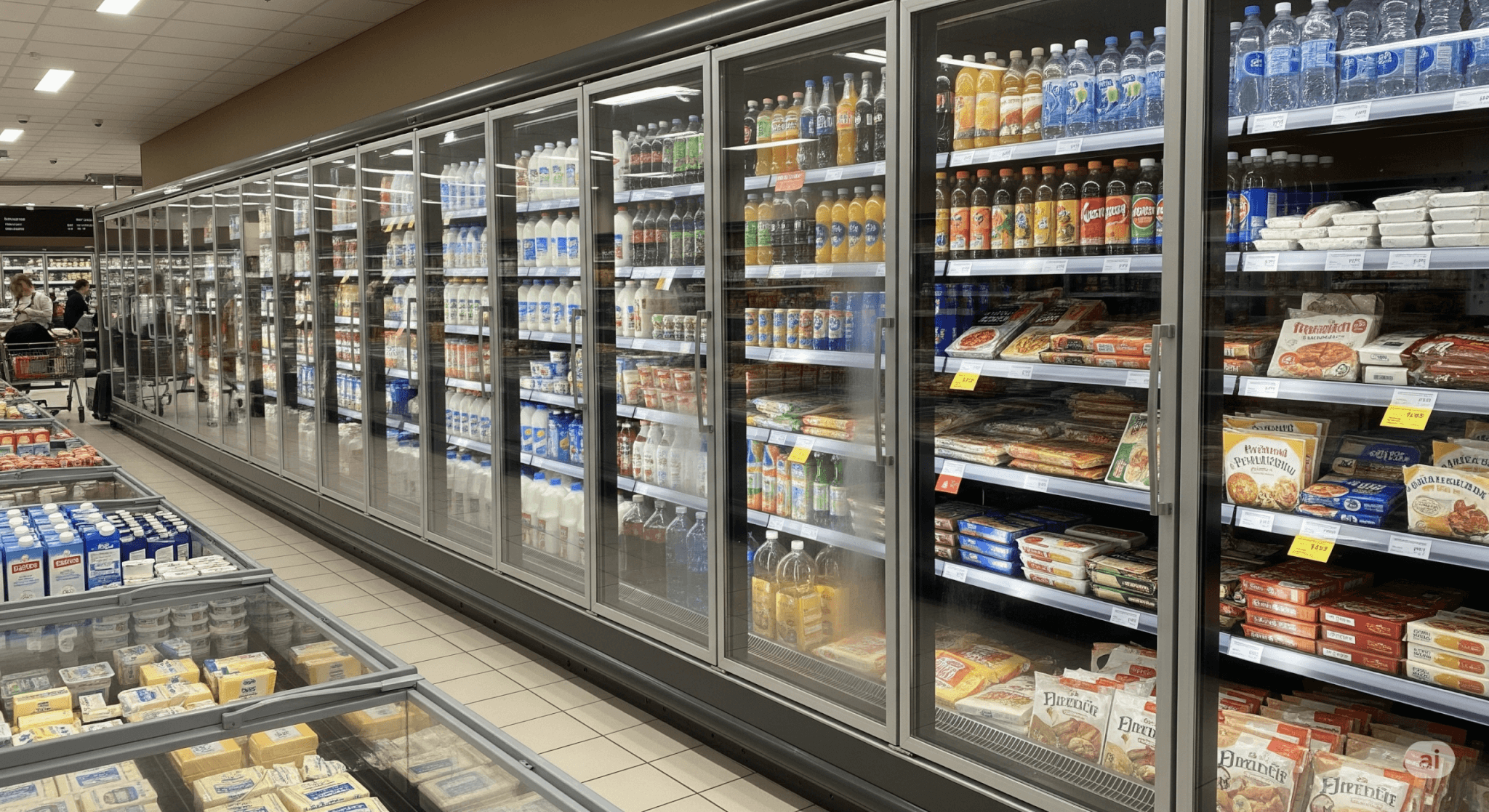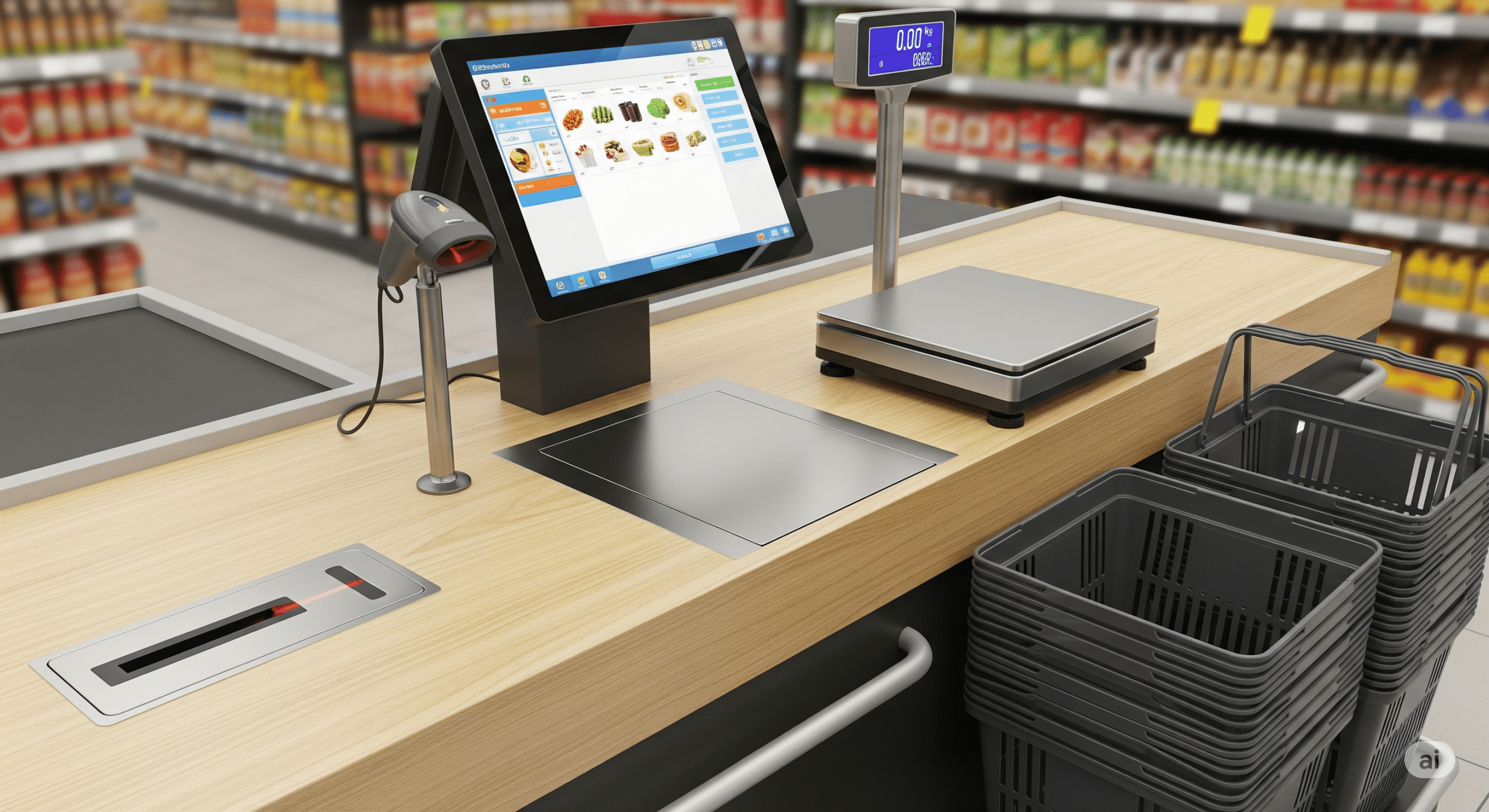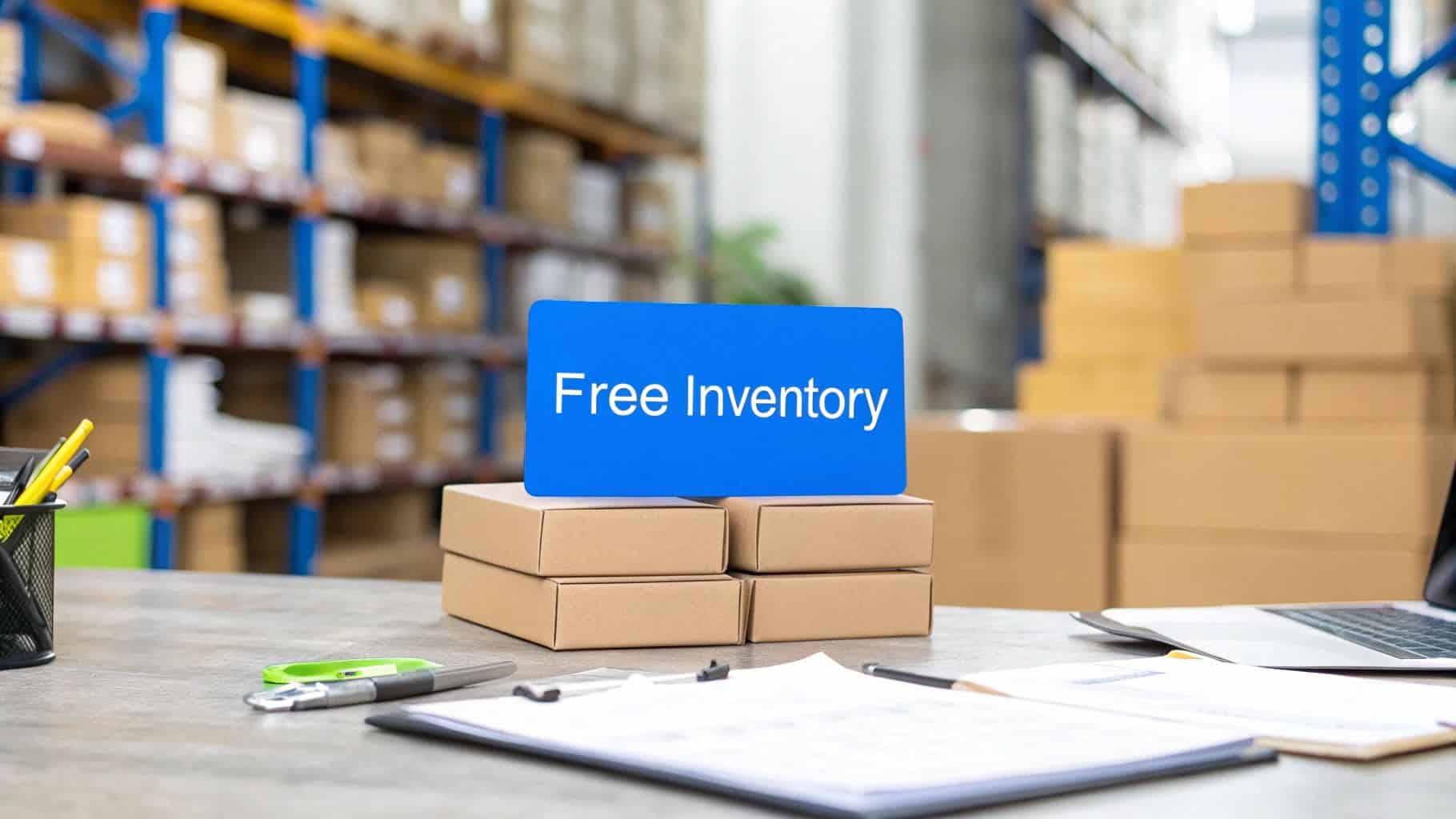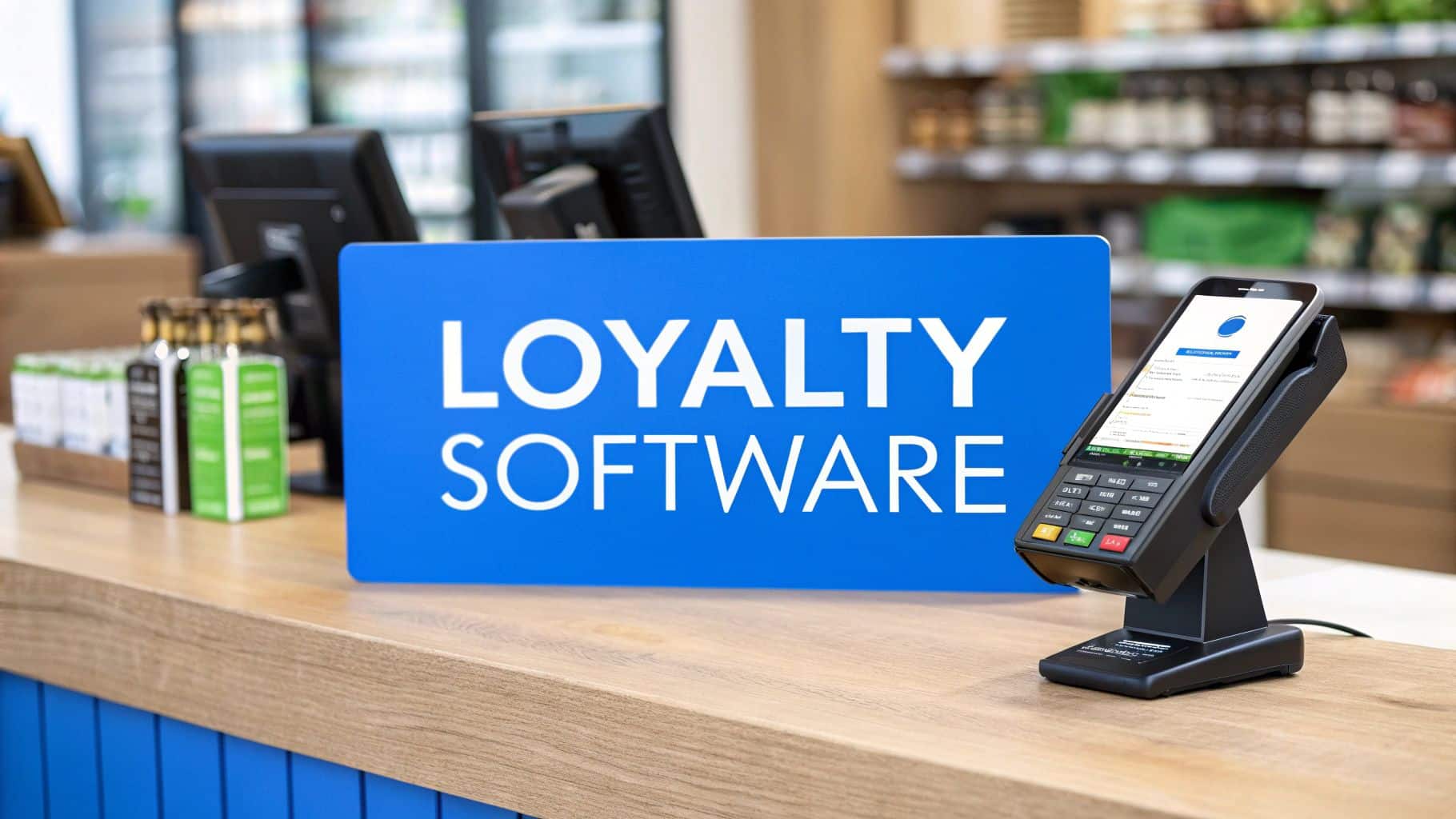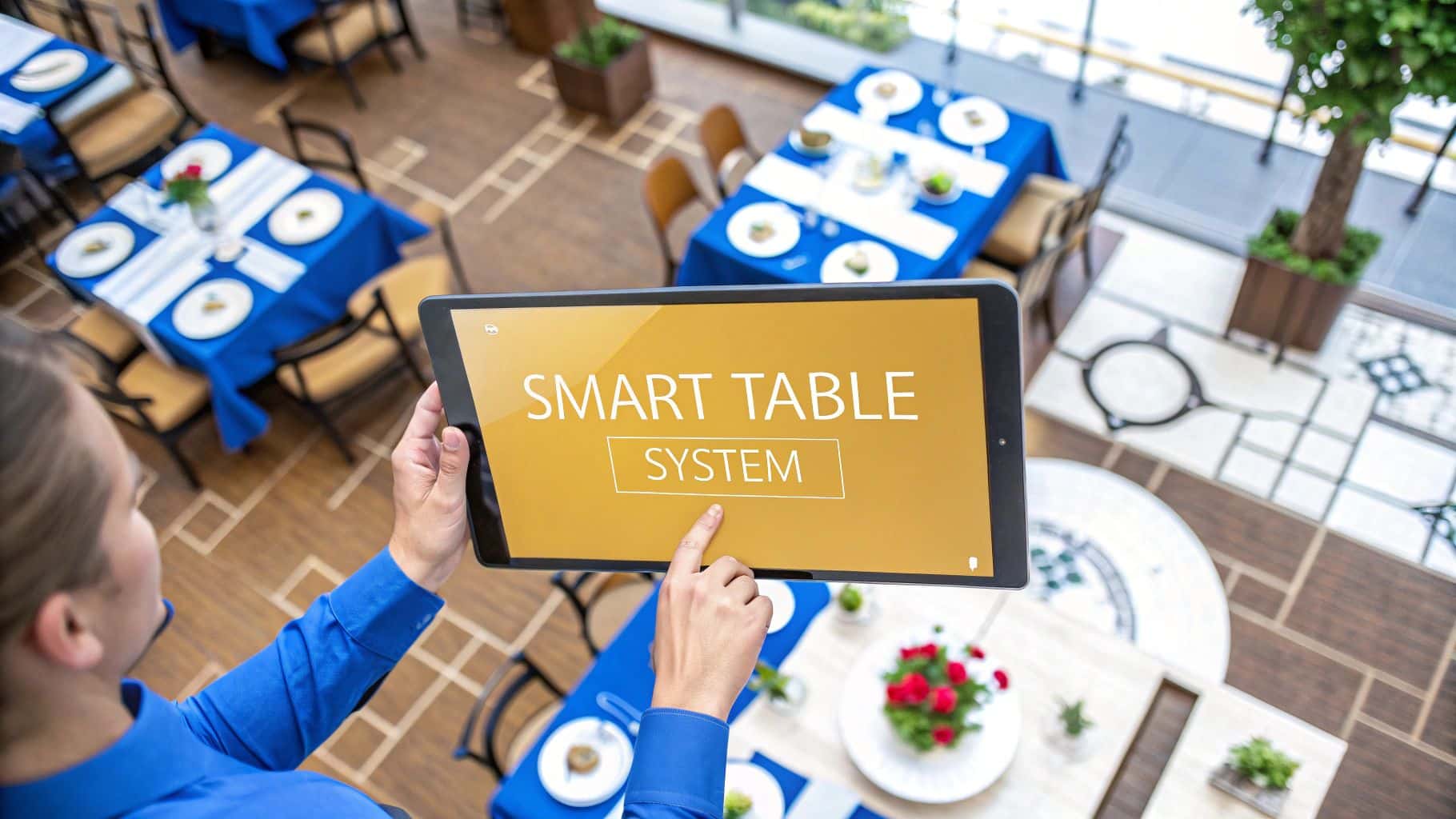Opening a grocery store is both exciting and challenging. One of the first questions aspiring store owners ask is, “What equipment do I need to open a grocery store?” The right equipment sets the foundation for smooth operations, ensures customer satisfaction, and keeps your products fresh and presentable. From refrigeration units to checkout counters, every detail matters when creating a functional and inviting retail space. This guide walks you through the essential tools and fixtures you’ll need, helping you avoid costly mistakes and build a store that runs efficiently from day one.
Table of Contents
- Refrigeration and Cooling Equipment
- Shelving, Display, and Storage Units
- Checkout and POS System Essentials
- Customer Experience Equipment
- Safety, Security, and Maintenance Tools
- Frequently Asked Questions
Refrigeration and Cooling Equipment
Refrigeration is the backbone of every grocery store. Without reliable cooling systems, perishable items like dairy, produce, and frozen foods spoil quickly, resulting in significant financial loss. Investing in high-quality refrigeration equipment ensures not only food safety but also customer trust. Let’s explore the different refrigeration units every store should consider.
Refrigeration Units
Refrigeration units are essential for preserving the integrity of perishable items, and their importance cannot be overstated. Customers expect milk, eggs, cheese, and fresh meats to be consistently chilled and safe to consume. Without dependable units, product spoilage leads not only to direct financial losses but also to damaged customer confidence. Shoppers rarely return to a store where they experienced spoiled milk or wilted produce, which is why this equipment is central to your grocery store’s success.
Energy efficiency is another crucial factor when choosing refrigeration units. According to industry studies, energy-efficient commercial refrigerators can cut electricity costs by as much as 20–30% annually. Over time, these savings significantly impact your bottom line while also reducing your environmental footprint. With growing awareness around sustainability, customers increasingly prefer businesses that adopt eco-friendly practices, giving your store an added competitive edge in the market.
Finally, placement and layout of these units directly affect both operations and customer experience. Units installed along the perimeter of your store create a logical flow and maximize available floor space. Customers can easily browse chilled goods while enjoying a natural shopping path, while employees benefit from easier stocking and maintenance. In short, refrigeration units are not just technical necessities — they are strategic tools for shaping the shopping experience.
Display Freezers and Produce Coolers
Display freezers play an essential role in showcasing frozen products while keeping them at the required temperature. Customers expect ice cream, frozen vegetables, and ready-made meals to be not only safe but also easy to browse. Glass-door freezers offer excellent product visibility, allowing shoppers to quickly locate their favorite brands. This not only boosts sales but also reduces the amount of time customers spend searching, creating a smoother shopping experience overall.
Produce coolers, meanwhile, help maintain the crispness and vibrant colors of fresh fruits and vegetables. Studies show that fresh produce is among the top reasons people choose one grocery store over another, meaning proper storage is vital for attracting loyal shoppers. These coolers regulate both temperature and humidity, slowing down spoilage while keeping items visually appealing. A well-maintained cooler ensures your lettuce stays crunchy, apples remain shiny, and tomatoes look ripe and juicy instead of dull and limp.
Choosing between upright, island, or walk-in freezers depends on the size and focus of your grocery business. For example, small stores may opt for island-style freezers to save space, while larger supermarkets benefit from multi-door or even walk-in units for bulk storage. Balancing visibility, storage capacity, and energy efficiency ensures that your freezers and coolers provide maximum value while meeting the unique needs of your customer base.
Deli and Bakery Equipment
If your store offers fresh deli items or baked goods, specialized equipment becomes indispensable. A high-quality meat slicer allows staff to serve consistently thin slices of ham or turkey, which customers value for both taste and presentation. Meanwhile, commercial bakery ovens enable you to bake bread, rolls, or pastries on-site, creating an inviting aroma that draws shoppers in and encourages impulse purchases. These fresh offerings add variety to your store and can set you apart from competitors who rely only on packaged goods.
Presentation is equally important in deli and bakery sections. Refrigerated deli cases keep meats and cheeses safe while allowing customers to see the full selection clearly. Bakery display cases, equipped with proper lighting, make fresh bread and pastries look irresistible. These equipment pieces turn ordinary products into premium offerings by emphasizing freshness, quality, and care. When customers can see and smell baked goods right from the oven, their likelihood of purchase increases significantly.
Beyond just attracting customers, deli and bakery equipment also improve operational efficiency. Weighing scales and price labeling machines integrated into these sections reduce manual work and errors. Employees can provide faster service, ensuring lines move quickly during busy hours. By investing in these specialized tools, your grocery store expands its value proposition, meeting customer demand for both convenience and quality.
Shelving, Display, and Storage Units
Once your refrigeration needs are covered, the next step is organizing your store layout. Shelving units, display fixtures, and storage racks make products accessible, easy to browse, and visually appealing. A well-structured store layout encourages impulse buys and ensures smooth inventory management.
Shelving Units and Store Fixtures
Shelving units are the backbone of product organization in any grocery store. Customers expect aisles to be clearly arranged so they can quickly locate everything from canned goods to household supplies. Adjustable shelves provide the flexibility needed to accommodate items of different shapes and sizes, whether tall cereal boxes or small spice jars. End caps, which are shelves placed at the end of aisles, are prime real estate for seasonal promotions and high-margin products.
The aesthetics of your shelving also matter. For instance, metal shelving conveys durability and a modern look, while wooden shelving can create a more natural, organic shopping environment. The choice depends on your brand identity and the message you want to send. A store focusing on organic or artisanal products may opt for rustic shelving, while a discount retailer may prefer simple, functional units. The design of store fixtures directly impacts how customers perceive your brand.
Durability and strength are critical considerations. Shelves must withstand constant use and heavy loads without warping or collapsing. Investing in high-quality shelving units saves money in the long run because they won’t need frequent replacement. In many cases, sturdy shelving also improves safety for staff and customers, reducing the risk of accidents caused by falling items.
Stockroom Shelving and Storage Racks
Behind the customer-facing shelves lies the stockroom, where efficiency is equally important. Stockroom shelving and storage racks help organize back-end inventory, ensuring employees can quickly restock shelves during peak hours. An organized stockroom reduces stress for staff and prevents situations where popular products are unavailable on the sales floor due to mismanaged inventory. This backstage organization translates into a smoother customer experience.
Heavy-duty racks are particularly useful for bulk storage. For example, cleaning supplies, paper products, and bulk packaged foods can be stacked safely and accessed when needed. Vertical storage solutions maximize space in smaller stockrooms, allowing you to hold more products without clutter. Labeling sections on these racks further improves efficiency, enabling staff to locate items instantly and reducing downtime.
Safety is another key factor in stockroom design. A clutter-free stockroom reduces workplace accidents, while clear walkways make moving goods easier. Investing in sturdy, well-organized storage racks is not only about operational convenience but also about protecting employees and ensuring compliance with workplace safety standards.
Signage Displays and Lighting Fixtures
Signage serves as the visual language of your grocery store. Clear aisle markers and promotional signs reduce confusion and help shoppers navigate efficiently. When customers can easily find the pasta aisle or spot a promotion on organic snacks, their overall shopping experience improves. Digital signage has become especially popular, offering flexibility to update promotions instantly without reprinting posters, saving both time and money.
Lighting complements signage by creating an inviting shopping environment. Properly lit produce looks fresher and more appealing, while bakery items displayed under warm lighting seem more appetizing. Studies have shown that lighting can directly influence purchasing decisions, making it a powerful yet often overlooked sales tool. LED lighting, in particular, reduces energy costs and offers long-lasting performance compared to traditional fluorescent bulbs.
Combining signage and lighting creates a cohesive in-store experience. For instance, spotlighting seasonal promotions with bright signage and accent lights encourages impulse buys. By strategically placing signage and lighting fixtures, store owners can guide customers through the store, highlight profitable items, and increase overall sales.
Checkout and POS System Essentials
The checkout process is where all your efforts behind the scenes come together. A smooth, efficient, and reliable checkout experience not only determines how quickly lines move but also affects how customers perceive your store. This stage is often the last impression shoppers take with them, and investing in the right checkout counters, POS systems, and supporting equipment ensures they leave with a positive experience.
Checkout Counters
Checkout counters are more than just places to complete a transaction — they are command centers where customer service and efficiency meet. A well-designed counter must balance practicality with aesthetics, offering space for scanning items, bagging groceries, and interacting with customers. Counters that include conveyor belts are particularly effective in larger stores because they streamline the process, allowing customers to place their items on the belt while the cashier focuses on scanning. This helps reduce bottlenecks, especially during peak hours.
Design and ergonomics play an equally vital role. A counter must be comfortable for both customers and staff. Employees should be able to access scanners, cash drawers, and bagging stations without unnecessary stretching or movement. Counters that consider ergonomics reduce staff fatigue, improve accuracy, and lower the risk of workplace injuries. Customers also notice when a store is designed with convenience in mind, making them more likely to return.
Brand consistency can also extend to your checkout area. Counters that match the overall design and ambiance of the store create a sense of professionalism and cohesion. For example, a natural foods store might opt for wooden finishes, while a modern supermarket could choose sleek stainless steel. These small details reinforce your brand identity and enhance customer trust, showing attention to both form and function.
POS System and Barcode Scanners
A robust POS system is the heart of any modern grocery store. Beyond simple payment processing, today’s systems offer inventory management, sales tracking, customer loyalty integration, and even real-time reporting. Cloud-based solutions like Biyo POS allow owners to access sales data from anywhere, making decision-making faster and more accurate. Having this level of control gives store managers insights into peak shopping hours, top-selling products, and inventory needs, allowing for smarter business strategies.
Barcode scanners complement POS systems by ensuring speed and accuracy at checkout. Without scanners, manual price entry increases the likelihood of errors and slows down the entire process. Modern scanners come in both fixed and handheld versions. Fixed scanners are ideal for high-volume checkout lanes, while handheld models are useful for bulky or oddly shaped items. Together, they keep the checkout process efficient and accurate, reducing customer frustration and boosting overall satisfaction.
Integration is where the real power lies. When barcode scanners and POS systems communicate seamlessly, every item scanned updates the inventory in real time. This eliminates the guesswork of stock management and prevents scenarios where shelves are empty because staff didn’t realize items had sold out. This integration saves both time and money, while also ensuring customers can reliably find the products they want.
Weighing Scales and Price Labeling Machines
For items sold by weight, such as produce, fresh seafood, or deli meats, accurate weighing scales are essential. Modern digital scales can be directly integrated with your POS system, printing labels that include the item name, weight, price, and barcode. This ensures accuracy while also saving time for staff and reducing errors. Customers appreciate this transparency, as it eliminates confusion over how their total cost was calculated.
Price labeling machines further streamline operations by applying clear, professional price tags to products. Whether labeling baked goods, packaged meat, or bulk-bin items, consistent and legible labels reassure customers that pricing is fair and accurate. Inconsistent or unclear pricing can cause hesitation, frustration, or even complaints — all of which hurt your store’s reputation. Automated label printers reduce this risk while enhancing the customer experience.
These systems also improve operational efficiency. Staff can quickly weigh, label, and stock items without slowing down, while customers benefit from faster service. When integrated with the POS system, pricing updates across your entire store are consistent, ensuring the same item doesn’t show different prices in separate departments. This consistency reinforces trust and reduces disputes, making the entire shopping experience smoother for everyone.
Customer Experience Equipment
Customer satisfaction extends beyond product selection and pricing. The equipment you provide to enhance convenience, safety, and ease of shopping can significantly influence how customers feel about your store. From shopping carts to security measures, these investments may seem small individually, but together they create an environment where customers feel comfortable and cared for.
Shopping Carts and Baskets
Shopping carts and baskets are among the most visible and frequently used customer tools in a grocery store. A wobbly cart with a squeaky wheel can sour an entire shopping trip, while sturdy, well-maintained carts encourage shoppers to buy more. Offering a range of cart sizes is a practical way to accommodate different needs. Compact carts are perfect for small households or customers making a quick stop, while larger carts support bulk buyers and families shopping for the week.
Baskets are equally important for convenience. Customers who only need a few items may prefer not to maneuver a cart through the aisles. Placing baskets near entrances and throughout the store increases accessibility, encouraging quick grabs and boosting impulse purchases. In fact, research shows that shoppers carrying baskets are more likely to add extra items compared to those who carry products by hand.
Maintenance is a critical part of managing carts and baskets. Regular inspections ensure that wheels roll smoothly, handles remain intact, and baskets stay clean. Investing in high-quality carts with protective finishes reduces wear and extends lifespan. Customers notice when a store maintains its equipment, and it directly contributes to their perception of professionalism and attention to detail.
Security Cameras and Safety Equipment
Security cameras serve multiple purposes in a grocery store. They deter theft, monitor employee behavior, and create a sense of safety for customers. High-definition cameras with wide coverage areas reduce blind spots and provide valuable evidence in the event of disputes or incidents. Many modern systems allow remote access, meaning store owners can monitor activity even when they’re not physically present, offering peace of mind and operational oversight.
Beyond theft prevention, safety equipment like fire extinguishers, first aid kits, and emergency exits ensures compliance with health and safety regulations. These items are not optional; they’re mandatory for protecting lives and assets. A store that prioritizes safety demonstrates responsibility, which builds customer trust. Shoppers naturally feel more secure in an environment where safety measures are clearly in place and well-maintained.
Integrating security cameras with POS systems can further improve accountability. For instance, video footage linked with specific transactions allows managers to investigate suspicious returns or cashier errors quickly. This level of oversight strengthens store security while ensuring fairness in resolving disputes, fostering confidence among both staff and customers.
Cleaning Equipment
Cleanliness is one of the first things shoppers notice when entering a grocery store, and it strongly affects whether they return. A spotless floor, shiny shelves, and sanitized carts make customers feel comfortable and safe. Essential cleaning equipment includes mops, buckets, floor scrubbers, and sanitizing stations. Larger stores often benefit from automated cleaning machines that can cover wide areas efficiently, saving staff time and maintaining consistent results.
Handheld cleaning tools also play an important role. Dusters, wipes, and sanitizing sprays help staff keep shelves and checkout counters spotless throughout the day. In high-touch areas such as freezer handles and shopping cart grips, regular sanitation is not just a matter of appearance but also of health. In recent years, hygiene has become a top priority for shoppers, and stores that visibly maintain cleanliness gain an advantage.
Cleanliness also supports staff morale and efficiency. Employees working in a clean environment are less likely to experience frustration or health issues, and they can focus on serving customers better. Regular cleaning schedules supported by high-quality equipment reduce maintenance costs in the long run, ensuring that your store looks welcoming while safeguarding customer health and safety.
Safety, Security, and Maintenance Tools
Running a grocery store is not just about stocking products and serving customers. Long-term success depends on safety measures, maintenance practices, and operational reliability. Investing in the right security, lighting, and backup systems ensures your store remains functional, safe, and profitable regardless of the challenges that arise.
Lighting Fixtures
Lighting is one of the most underrated yet impactful aspects of store design. Customers often make subconscious decisions based on how appealing a product looks under store lighting. Bright, cool-toned lights make produce appear fresher, while warm lighting creates a cozy, inviting atmosphere in areas like bakeries. For example, apples displayed under proper lighting appear shinier and more appetizing, increasing the likelihood of purchase.
Energy-efficient LED lighting is the gold standard for modern grocery stores. LEDs consume less energy, last longer, and produce less heat compared to traditional fluorescent bulbs. According to industry data, switching to LED lighting can reduce energy costs by up to 50%, which translates to substantial savings for store owners. Beyond financial benefits, adopting eco-friendly lighting also positions your business as a sustainable choice, appealing to environmentally conscious shoppers.
Strategic lighting placement enhances both function and aesthetics. Accent lighting draws attention to promotions, while overhead lighting ensures consistent visibility throughout the store. Properly illuminated aisles reduce accidents and improve the shopping experience, ensuring customers feel safe and comfortable as they browse.
Stock Management and Labeling Tools
Stock management is critical for maintaining balance between supply and demand. Equipment like handheld inventory scanners, stockroom shelving, and digital labeling machines streamline this process. Employees can scan barcodes to update inventory counts instantly, preventing stockouts and over-ordering. This reduces waste and ensures customers find what they need every time they visit your store.
Price labeling machines support inventory management by making product pricing clear and consistent. When labels are legible and professional, customers trust your pricing. Inconsistent or handwritten labels can raise doubts, leading to hesitation or even abandoned purchases. Automated labeling machines prevent these problems and improve operational efficiency by standardizing pricing across departments.
Integrating stock management tools with your POS system provides real-time insights into sales patterns and restocking needs. For example, if your POS shows that bottled water sells out every Friday, you can prepare by increasing stock in advance. These predictive capabilities make your store more responsive to customer demand and reduce the risk of losing sales due to empty shelves.
Maintenance and Backup Equipment
No matter how advanced your equipment, breakdowns are inevitable without proper maintenance. Having a preventive maintenance schedule ensures refrigeration, checkout counters, and POS systems stay in good working condition. Regular inspections and servicing reduce the likelihood of unexpected failures, which can be costly both in repairs and lost sales. For example, a broken freezer can spoil thousands of dollars’ worth of inventory in just a few hours.
Backup systems such as portable generators or spare refrigeration units are critical safeguards. Power outages can happen unexpectedly, and without backups, perishable goods can quickly spoil. Generators keep essential systems running, ensuring business continuity during emergencies. This level of preparedness demonstrates professionalism and resilience, reassuring customers and investors alike.
Partnering with reliable service providers for emergency repairs is also essential. Building a network of trusted technicians ensures that when issues arise, they are resolved quickly with minimal disruption. Having these safety nets in place allows grocery store owners to focus on growth and customer service, instead of being constantly distracted by operational setbacks.
Why Biyo POS is Essential for Grocery Stores
While equipment like refrigeration units, shelving, and checkout counters are the physical backbone of your grocery store, your POS system is its digital brain. Biyo POS is designed specifically with grocery retailers in mind, offering advanced features like barcode scanning, real-time inventory tracking, and seamless payment processing. With cloud-based access, you can monitor sales and inventory from anywhere, ensuring you stay in control no matter where you are.
Biyo POS also integrates with weighing scales and labeling machines, making it easier to handle variable-priced goods like produce or deli meats. Its AI-driven insights highlight best-selling items, seasonal trends, and even opportunities for promotions. This helps grocery owners make data-driven decisions that boost profitability while reducing waste. In a highly competitive market, these tools give you a strong advantage.
Most importantly, Biyo POS enhances the customer experience. Faster checkouts, fewer errors, and multiple payment options — including mobile wallets and contactless payments — make shopping at your store convenient and enjoyable. By choosing Biyo POS, you invest not only in efficiency but also in building long-term customer loyalty, ensuring your grocery store thrives in today’s fast-paced retail environment.
Frequently Asked Questions
What equipment do I need to open a grocery store on a budget?
If you’re starting small, focus on the essentials: refrigeration units, shelving, checkout counters, and a reliable POS system. These are the core items that ensure your products remain fresh, your store stays organized, and your transactions run smoothly. As your business grows and profits increase, you can expand into additional features like bakery ovens, deli slicers, and advanced signage displays. Starting lean and scaling strategically reduces financial risk while still creating a functional store environment.
How much does grocery store equipment cost?
The cost of equipment depends on store size, location, and the quality of equipment you choose. For a small neighborhood grocery store, the initial investment in equipment might range between $50,000 and $100,000. Larger supermarkets with advanced refrigeration, bakery, and deli sections can spend several hundred thousand dollars. While upfront costs may seem steep, remember that investing in high-quality, energy-efficient equipment often saves money long-term by reducing maintenance and energy bills.
Is second-hand grocery store equipment worth it?
Second-hand equipment can be a smart option if you’re working on a tight budget. Items like shelving units, shopping carts, and storage racks are often durable enough to be reused without issue. However, you should approach refrigeration units and POS systems with caution. Older models may be less energy-efficient or lack modern features, leading to higher operating costs in the long run. Always inspect used equipment carefully and, if possible, purchase from reputable resellers who offer warranties or service agreements.
